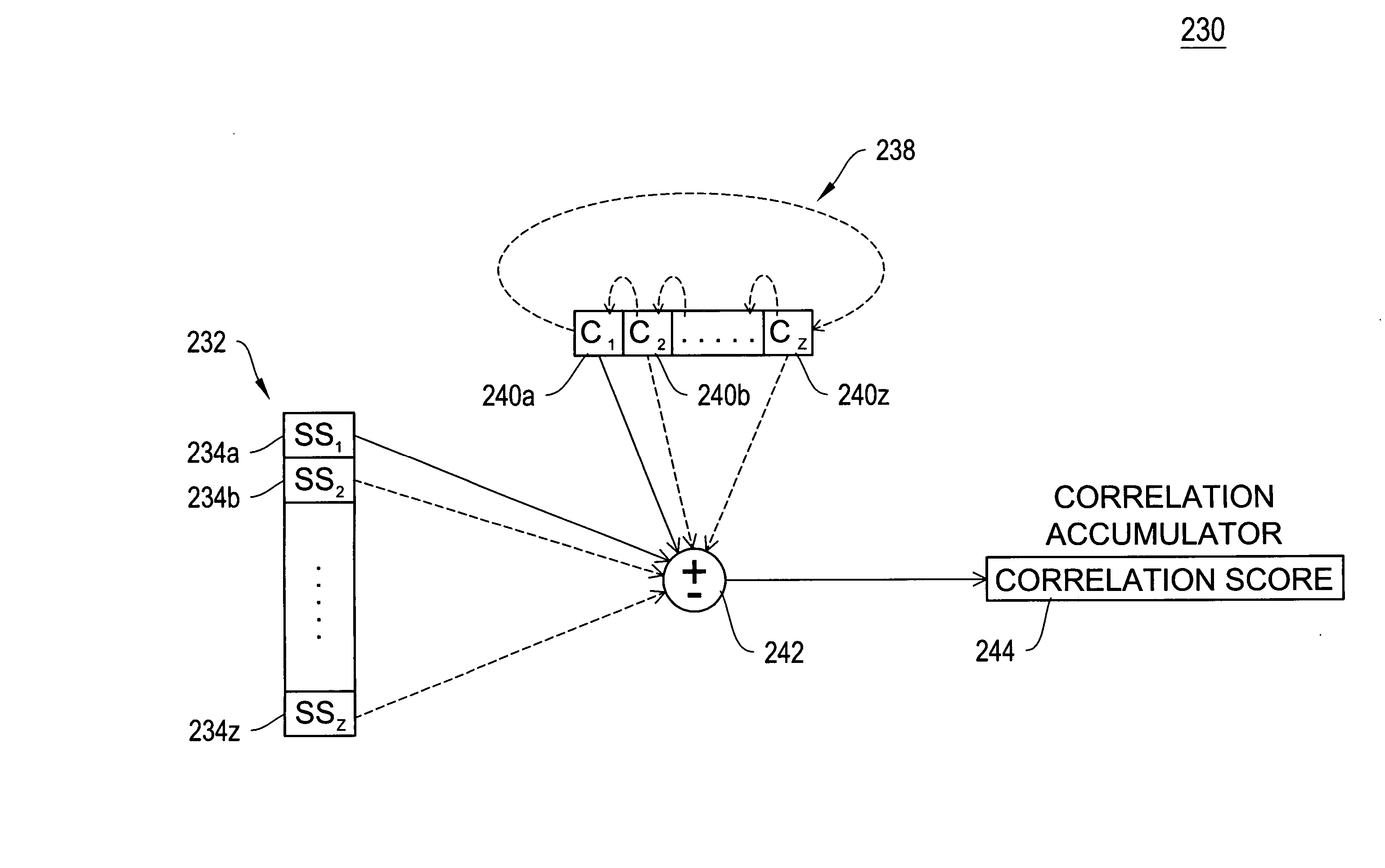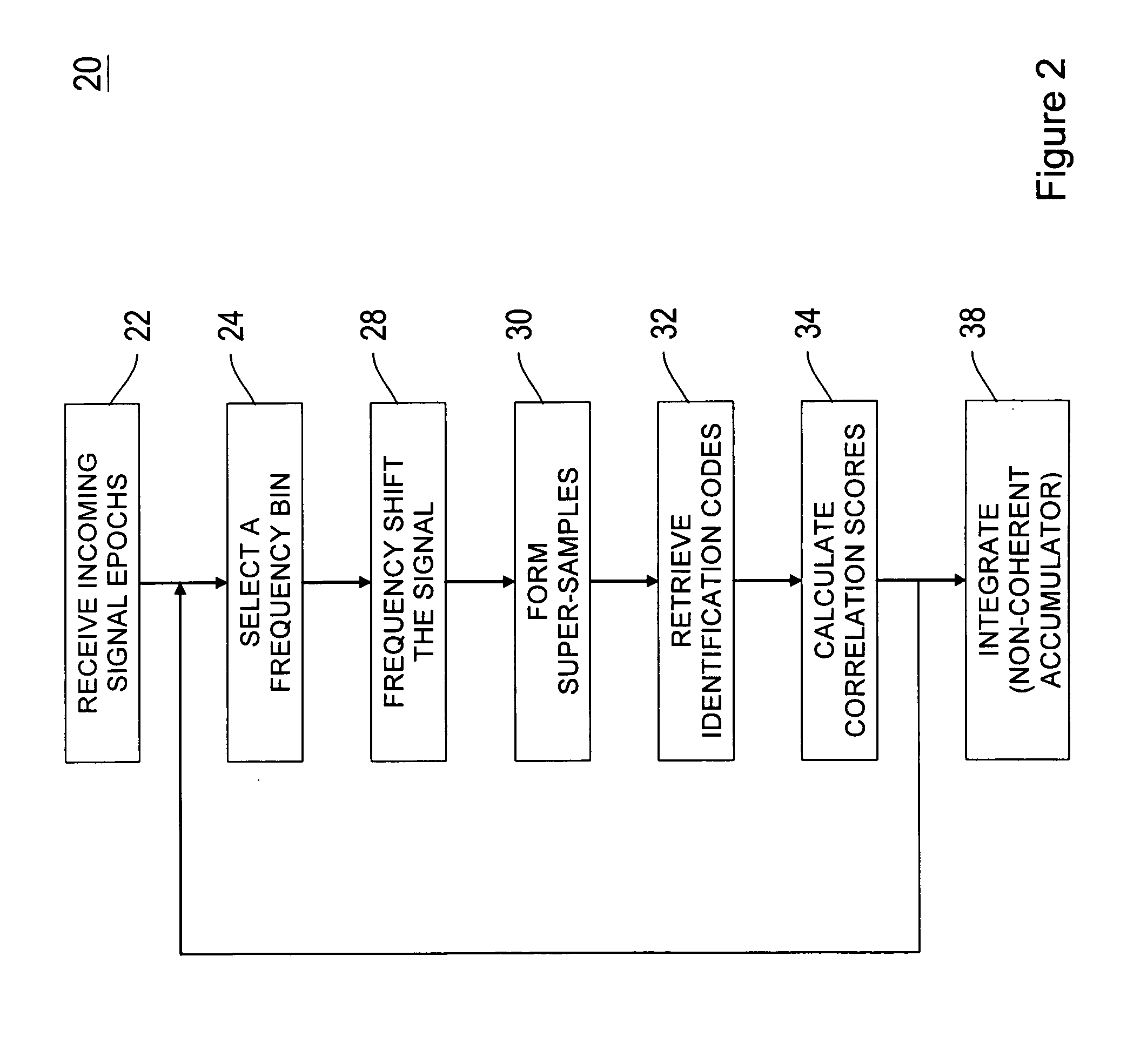Method and apparatus for real-time digital processing of satellite positional signals for fast acquisition and low SNR tracking
- Summary
- Abstract
- Description
- Claims
- Application Information
AI Technical Summary
Benefits of technology
Problems solved by technology
Method used
Image
Examples
Embodiment Construction
[0041] To provide an overall understanding of the invention, certain illustrative embodiments will now be described, including systems, methods and devices for providing improved acquisition and processing of positioning signals from satellites in low signal to noise ratio (SNR) environments. However, it will be understood by one of ordinary skill in the art that the systems and methods described herein can be adapted and modified for other suitable applications and that such other additions and modifications will not depart from the scope hereof.
[0042]FIG. 1 shows a high level schematic of a system 10 for receiving satellite signals. FIG. 1 shows a receiver 12 and three satellites 14a-14c. Each satellite 14a-14c transmits a spread spectrum L1 signal 16a-16c. The receiver 12 receives the satellite signals 16a-16c via an RF front end, and then digitally processes the data to identify the satellites 14a-14c and thereby determines its location.
[0043] According to one embodiment, an e...
PUM
 Login to View More
Login to View More Abstract
Description
Claims
Application Information
 Login to View More
Login to View More - Generate Ideas
- Intellectual Property
- Life Sciences
- Materials
- Tech Scout
- Unparalleled Data Quality
- Higher Quality Content
- 60% Fewer Hallucinations
Browse by: Latest US Patents, China's latest patents, Technical Efficacy Thesaurus, Application Domain, Technology Topic, Popular Technical Reports.
© 2025 PatSnap. All rights reserved.Legal|Privacy policy|Modern Slavery Act Transparency Statement|Sitemap|About US| Contact US: help@patsnap.com



